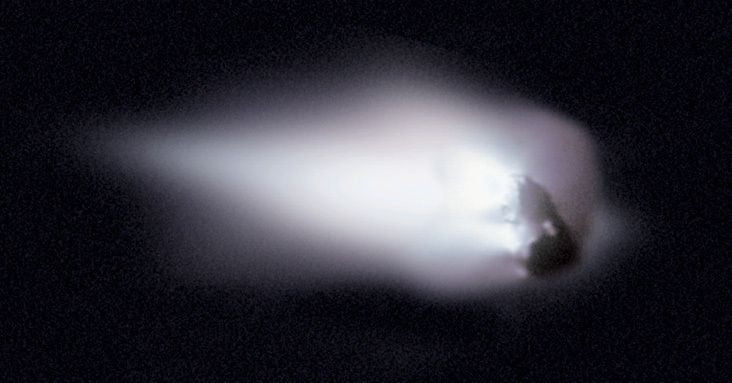Astronomers Confirm Comet SWAN Is Dying

KEY POINTS
- Astronomers confirmed that the comet known as SWAN is dying
- Comet SWAN's brightness decreased after it flew close to the Sun
- Despite the comet's decreased brightness, its tail is still visible
Astronomers observing the comet known as SWAN confirmed that the icy cosmic object is dying. Its deterioration started after it flew close to the Sun last month.
The comet, officially known as C/2020 F8, was first spotted on April 11 by the Solar Heliospheric Observatory (SOHO), a robotic satellite launched through a collaborative effort between NASA and the European Space Agency to study the Sun.
When the comet was first discovered, astronomers noted that it was bright enough to be spotted from Earth by the human eye. They attributed its brightness to the comet’s outbursts, which were most likely caused by explosions of gas and dust from comet SWAN’s surface.
At first, it was believed that the outbursts were caused by possible fragmentation. But, as explained by Karl Battams of the Naval Research Lab in Washington, D.C., outbursts do not necessarily mean that the comet is breaking apart. Instead, heat from the Sun might be causing explosions on the comet’s surface.
“Outbursts do not necessarily imply fragmentation, and ground-based images are not yet showing evidence of a breakup," he said, according to SpaceWeather.com. "This could just be a particularly feisty and volatile comet.”
On May 28, the comet reached its closest distance to the Sun. Unfortunately, according to the amateur astronomers closely monitoring the comet, SWAN’s brightness has consistently decreased after its flyby of the massive star.
Despite the decrease in its brightness, the comet’s distinct tail is still visible. Amateur astronomer Andre Aletti of Campo Dei Fiori Mount in Varese, Italy was able to capture a stunning photo of comet SWAN’s tail. In the photo, which was shared via SpaceWeather.com, the tail appeared as a green gaseous plume in the sky.
Based on the comet’s current condition, astronomers like Aletti expect that SWAN’s brightness will continue to decrease over the next couple of days and weeks. Although the comet will be harder to observe as it nears its death, those looking to follow SWAN may do so through The Sky Live’s tracker. It provides astronomers with the necessary data to spot the comet in the sky.
© Copyright IBTimes 2025. All rights reserved.





















